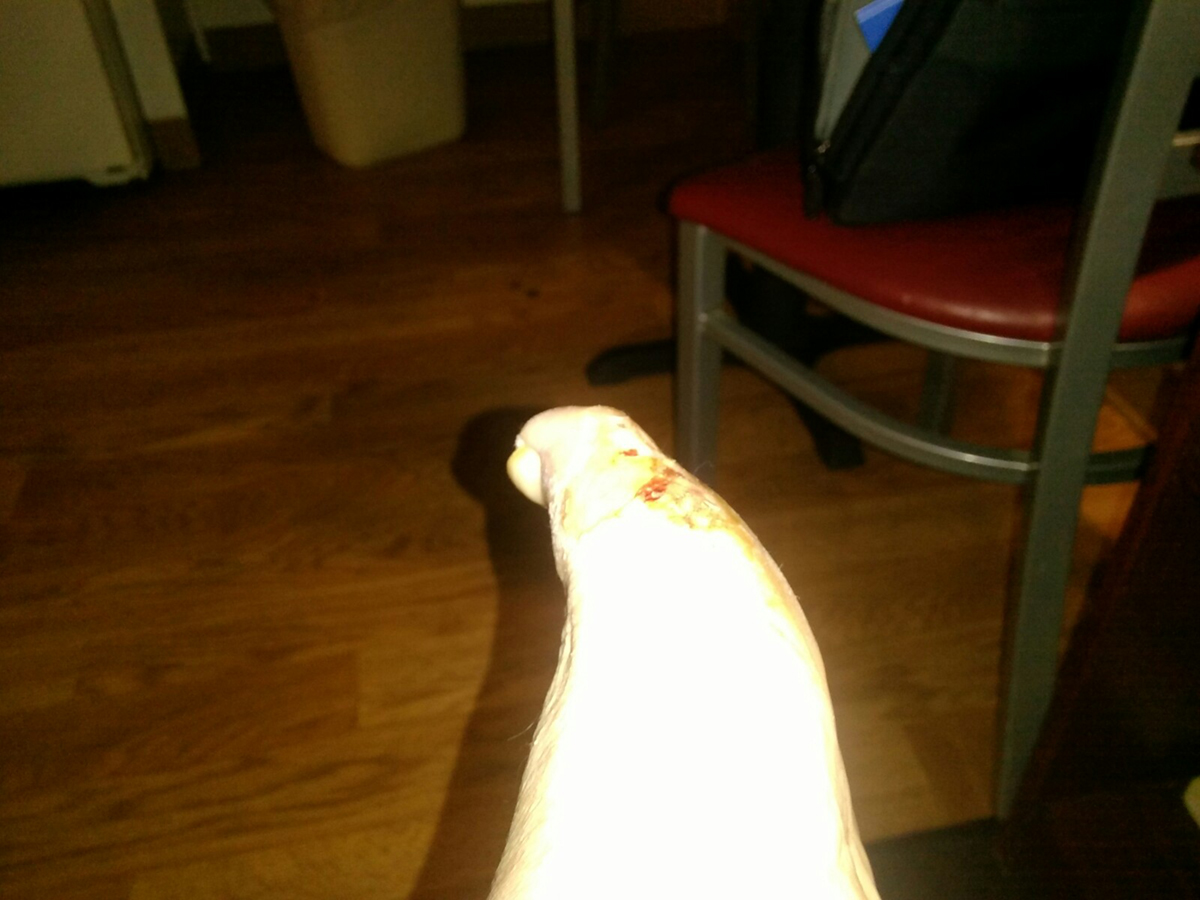Table of Contents
Cellulitis, a bacterial infection of the skin, used to be easy to control with antibiotics. With growing problems with antibiotic resistance, however, some doctors are going back to traditional medicine to find a cure
Cellulitis is an infection of the skin that does not, at least in its early stages, kill tissue. Bacteria enter the skin through a scratch, a cut, or an abrasion. The break in the skin may be so small that it is not visible. The first sign of a problem is usually a change in the color of the skin. A blister may turn just a little black or blue. The skin may appear to be covered with dried blood, but the "blood" won't wash off. As the infection becomes more severe, there is redness, tenderness, warmth, and swelling. There may be no change for days or even a few weeks, but at some point the area of infection may start spreading from the break in the skin at the rate of an inch or two (two to five centimeters) an hour.
In severe cases, cellulitis forms buliae, purple lesions in the skin. The tissues underneath the infection may collapse. Cellulitis tends to be "more painful than it looks," and it can cause general flu-like symptoms as the condition spreads. Sudden spread of the infection, or areas of skin that seem to have gas under them, or high fever are a sign that a trip to the hospital is emergent. Often, by the time symptoms are painful enough that the patient "has to" see a doctor, the disease is so far progressed that even with modern treatment there is a significant risk of death. Some strains of bacteria that cause cellulitis carry a mortality rate of 50 percent or more, in seven to ten days, even with aggressive treatment.

What should you do to prevent cellulitis?
- Change socks and underwear regularly. Clothing that holds moisture close to the skin becomes a breeding ground for bacteria. Perianal cellulitis is a common problem in the elderly and in children under the age of three.
- Throw out old shoes, especially if (1) they have been soaked with sweat and (2) you have worn them on a farm, working in the garden, or walking through water overflowing from septic tanks, sewers, or municipal drainage systems.
- Wear socks when you wear shoes.
- If you have diabetes, keep your blood sugars in good control. Bacteria thrive in a sugar-rich environment.
- Keep athlete's foot under control.
- Moisturize dry skin, so bacteria can't come in through cracks.
What should you do if you suspect you have cellulitis?
- Let the infection drain. Tight bandages keep the bacteria in place so that they can tunnel through the skin.,
- Apply a topical antibacterial agent. Herbal remedies are fine for isolated, small (less than 5 mm, or about half an ince) areas of infection, but if the herb doesn't work in 24 hours of less, apply an antibiotic.
- Any time a red rash not caused by an allergy spreads to a diameter of 75 mm (3 inches) or more, see a doctor right away. The sooner you get treatment, the more likely it is to work. Antibiotics are effective in 90 percent of cases if they are started in time.
There is no such thing as a small skin infection in someone who has diabetes. Diabetics are especially likely to develop serious complications that require debridement (removal of infected tissue), prolonged antibiotic treatment, or even amputation when the infection spreads to bone. Diabetics need to see the doctor immediately when they find infections of the skin, especially in the feet.
- Stevens DL, Bisno AL, Chambers HF, et al. Practice guidelines for the diagnosis and treatment of soft tissue infections: 2014 Update by the Infectious Disease Society of America. Clin Ifect Dis. 15 July 2014. 59(2): 310-52.
- Photo by Robert Rister/SteadyHealth
- Photo by Robert Rister/SteadyHealth
- Photo by Robert Rister/SteadyHealth


Your thoughts on this